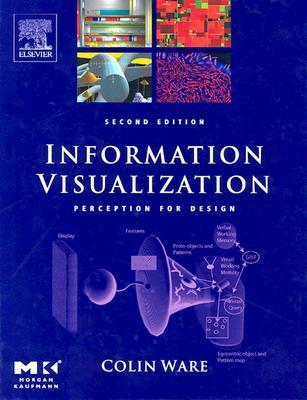What do you think?
Rate this book


"This unique and essential guide to human visual perception and related cognitive principles will enrich courses on information visualization and empower designers to see their way forward. Ware's updated review of empirical research and interface design examples will do much to accelerate innovation and adoption of information visualization."
—Ben Shneiderman, University of Maryland
"Colin Ware is the perfect person to write this book, with a long history of prominent contributions to the visual interaction with machines and to information visualization directly. It goes a long way towards joining science to the practical design of information visualization systems."
—from the foreword by Stuart Card, PARC
Most designers know that yellow text presented against a blue background reads clearly and easily, but how many can explain why, and what really are the best ways to help others and ourselves clearly see key patterns in a bunch of data? When we use software, access a web site, or view graphics, our understanding is greatly enhanced or impeded by the way information is presented. By explaining in detail how we think visually, this book provides guidance on how to construct effective interactive information displays.
This book combines a strictly scientific approach to human perception with a practical concern for the rules governing the effective visual presentation of information. Surveying the research of leading psychologists and neurophysiologists, author Colin Ware isolates key principles at work in vision and perception, and from them derives specific and effective visualization techniques suitable for a wide range of scenarios. Information Visualization offers practical guidelines that can be applied by anyone, and covers all facets of visual perception: color, organization, space perception, motion, and texture.
* Major revision of this classic work, with a new chapter on visual thinking, new sections on face perception and flow visualization, an appendix on how to evaluate visualizations,and a greatly expanded chapter on color and color sequences.
*New to this edition is the full-color treatment throughout, to better display over 400 illustrations.
*From a leading researcher in the field of human perception who has brought together, in a single resource, all current scientific insight into the question of data visualization.
512 pages, Hardcover
First published January 1, 2000